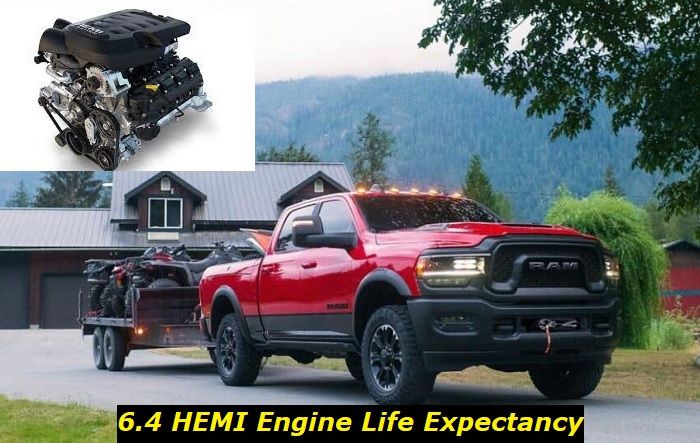The Subaru WRX is one of the most affordable performance cars on the planet with the base trim's $28,500 manufacturer's suggested retail price (MSRP). With that, there's plenty of wiggle room for your budget when choosing among its three other trims, namely the Premium, Limited, and STI. If you are looking to get the most out of the WRX, the best choice for you is the range-topping STI with an MSRP of $38,200 and $42,900 for STI Limited.
Key features and my opinion about the engine
- Production years:2017-now
- Average lifespan of FA24F:150,000-170,000 miles
- Fuel supply type:direct injection
- Power range:260-271 hp
- Fuel efficiency:average
- Engine block material:aluminum
- Engine reliability score:medium
- The most common problems:carbon buildup on intake valves, weak phasers, the engine is afraid of overheating, software issues.

Advantages of Getting STI Turbo Upgrade
If you're looking for an effective way to get more power out of your Subaru WRX STI, then upgrading the turbocharger is a great choice. There are several benefits that you can enjoy with the right STI turbo upgrade, including:
1. Boost in Horsepower Output
The primary benefit of upgrading the turbocharger on your Subaru WRX STI is that it will result in an increase in horsepower output. Depending on the size of the upgrade and the specific parts used, you could see an increase of anywhere from 20 to 50 horsepower. This can be a great way to make your car even faster and more powerful.
A further boost in horsepower can be achieved by partnering the turbo upgrade with ECU tuning and other supporting mods. Doing this could dramatically raise the output of your car beyond the 50 hp mark.
2. Improved Engine Efficiency
Another benefit of upgrading the turbocharger is that it can improve engine efficiency. This is because the turbocharger will be able to force more air into the engine, which will result in a more efficient combustion process. This can lead to better fuel economy and overall performance.
3. Enhanced Durability
When you upgrade the turbocharger of your Subaru STI, you're also enhancing the durability of this unit. This is because the upgraded turbocharger will be able to withstand higher levels of pressure, meaning that it won't fail as easily under high-performance driving conditions.
Different Ways to Upgrade the Turbocharger
There are a few different ways to upgrade the turbo on your Subaru WRX STI, and each has its own benefits and downsides. Among the most popular options are:
- Enlarging the Turbocharger
- Turbo Upgrade Kit
- Custom Turbocharger
- Hybrid Turbocharger
- Electric Turbocharger
Before proceeding, it is important for you to understand that the installation of a new turbocharger or turbo upgrades is a complex process that should only be done by skilled and experienced professionals. The benefits of having STI upgrades far outweigh the risks, but it's still important for you to make sure that everything is installed correctly, that all of the proper connections are made, and that they are operating smoothly and as intended. Failure to do any of these could result in serious engine damage, which may also impact the other components of the car.
Even if you are experienced with cars, it's not recommended that you do the work all by yourself. While a DIY project can bring out major self-fulfillment in the end, it would be more prudent if you get yourself some extra hands coming from qualified mechanics or specialists to mitigate risks and keep everything in order.
With those things in mind, let's proceed to ways on how you can significantly bump up the power of the STI using turbo mods. Here are the most popular options to choose from coupled with the pros and possible cons of each choice:
1. Bigger turbocharger
This is the most common way to get more power from your STI. By increasing the size of the turbocharger by adding reinforced components into it, you can increase the amount of air that is forced into the engine. This results in more power and improved performance.
The extra air boosts the amount of fuel that can be burned in the combustion chamber. This means that the engine can produce more power. Bigger turbochargers are usually used in high-performance cars that need to produce a lot of power.
The turbocharger consists of two main parts: the compressor and the turbine. The compressor is powered by the exhaust gases from the engine, and it compresses the air that enters the engine. The turbine is connected to the compressor and spins at high speeds, providing energy to power the compressor.
The size of the turbocharger determines how much air it can compress. A larger turbocharger will compress more air, and this means more power for the engine.
To increase the size of the turbocharger, there are two main options: increasing the diameter of the compressor, or increasing the size of the turbine. Both options have their pros and cons, so it's important to choose the right one for your car.
Increasing the diameter of the compressor will result in more power, but it will also raise fuel consumption and emissions. A larger turbine will spike the power, too, but it will be less efficient and may cause lag.
There are more downsides to using a bigger turbocharger. It can intensify the amount of noise that the engine makes. Moreover, it can put extra strain on the engine, which can lead to mechanical problems.
2. Turbo upgrade kit
Upgrade kits that replace the stock turbocharger with a larger one are becoming increasingly popular among car enthusiasts. These kits usually include other upgrades as well, such as bigger intercoolers and upgraded exhaust systems. The goal is to enhance the airflow into the engine, which in turn increases power.
The way it works is by using a larger turbocharger to compress more air into the engine. This increased airflow allows the engine to burn more fuel, which shoots up the power. The other upgrades in the kit work together to make sure that the increased airflow is not restricted. The intercooler keeps the air cool so that it can be compressed more, and the upgraded exhaust system lets the air flow out more freely.
By improving the airflow into the engine, they allow more fuel to be burned. This process is known as "forced induction." More fuel means more power, and that's why upgrading your turbocharger can be such a big spike in your car's performance.
Installing a turbocharger kit is not a simple task, however. It requires careful planning and execution. But if you're up for the challenge, the results can be well worth it.
3. Custom turbocharger
If you're looking for the ultimate in power and performance, a custom turbocharger is a way to go. These are designed specifically for your car and can provide huge gains in power.
There are two main types of turbochargers: sequential and twin-scroll. Sequential turbochargers have two separate chambers, each with its own turbine. The air is first compressed in the first chamber, then sent to the second chamber where it is compressed again before entering the engine. Twin-scroll turbochargers have a single chamber with two turbines. The air is compressed in the first turbine and then sent to the second turbine where it is further compressed before entering the engine.
Custom turbochargers are tailored to seamlessly integrate with the features of your car. They take into account the size of your engine, the type of fuel you use, and the specific driving conditions you'll be using them in. This ensures that your turbocharger is optimized for your car and provides the best possible outcome.
4. Hybrid Turbocharger
A hybrid turbocharger is a combination of a larger turbocharger and a smaller turbocharger. The smaller turbocharger is used at lower speeds to reduce lag, while the larger turbocharger is used at higher speeds for more power.
This setup provides the best of both worlds: the power of a larger turbocharger and the responsiveness of a smaller one. It's the perfect solution for those who want the most out of their car, but installing a hybrid turbocharger is no simple task. It requires careful planning, execution, and skill.
5. Electric Turbocharger
This is a turbocharger that is powered by an electric motor rather than by exhaust gases. This type of turbocharger can provide a significant power boost, but it comes with some drawbacks.
The main advantage of an electric turbocharger is that it eliminates lag. Lag is the time it takes for the turbocharger to spool up and start providing a boost. With an electric turbocharger, there is no lag because the electric motor starts the turbocharger immediately.
Another feature gained from an electric turbocharger is that it can be used on-demand. You can turn it on when you need the extra power and turn it off when you don't. This is not possible with a traditional turbocharger, which is always on once it's installed.
The main disadvantage of an electric turbocharger is the cost. They are much more expensive than traditional turbochargers. Another drawback is that they require a constant power source, so they can't be used on cars that don't have an electrical system. Electric turbochargers are still relatively new, so they haven't been perfected yet. There are still some reliability issues that need to be ironed out.
Which One is For You?
When choosing among these popular turbo upgrades, it's important to assess your budget, have careful and responsible planning of the upgrade that you want, and evaluate the possible drawbacks. In a nutshell, if you want a less intrusive approach to jacking up the power of your Subaru STI through a turbo upgrade, a slight increase in its size or a turbo upgrade kit will get the job done easily. Meanwhile, if you want the most power out of a turbo mod, better replace your turbo with a custom, hybrid or electric unit.
About the authors
The CarAraC research team is composed of seasoned auto mechanics and automotive industry professionals, including individuals with advanced degrees and certifications in their field. Our team members boast prestigious credentials, reflecting their extensive knowledge and skills. These qualifications include: IMI: Institute of the Motor Industry, ASE-Certified Master Automobile Technicians; Coventry University, Graduate of MA in Automotive Journalism; Politecnico di Torino, Italy, MS Automotive Engineering; Ss. Cyril and Methodius University in Skopje, Mechanical University in Skopje; TOC Automotive College; DHA Suffa University, Department of Mechanical Engineering






Add comment